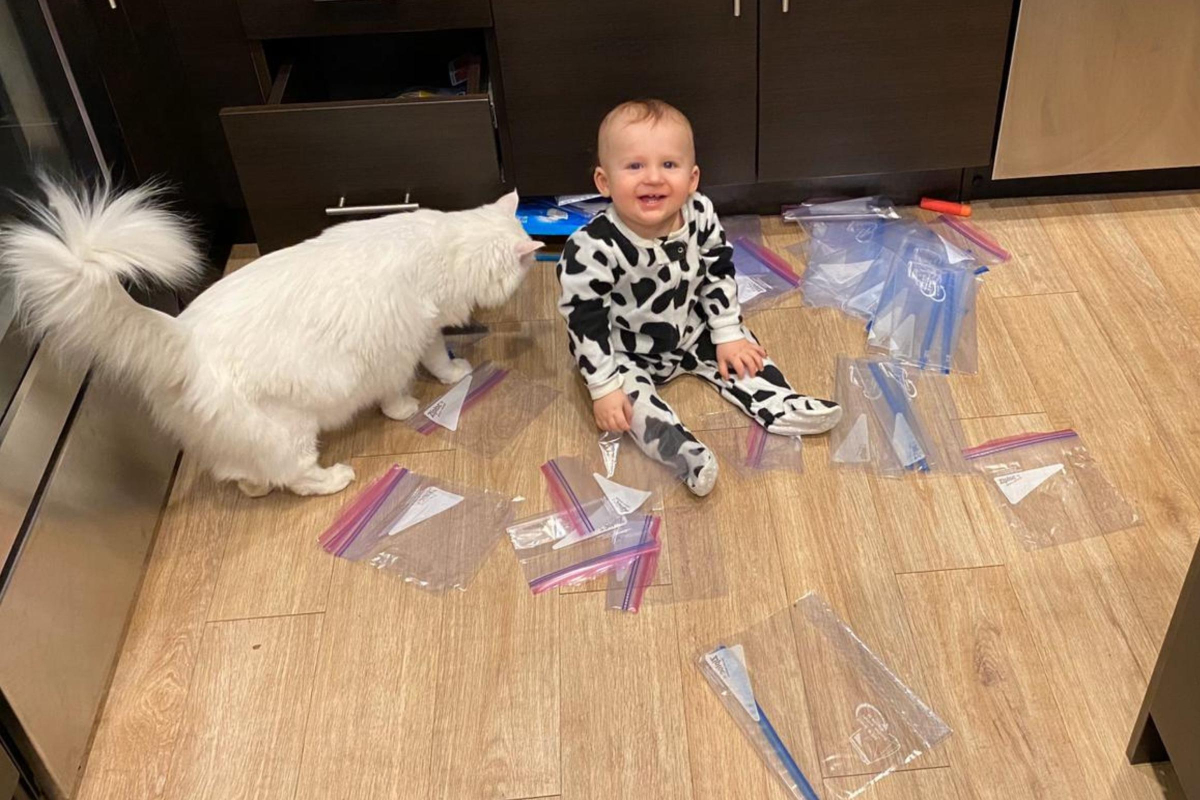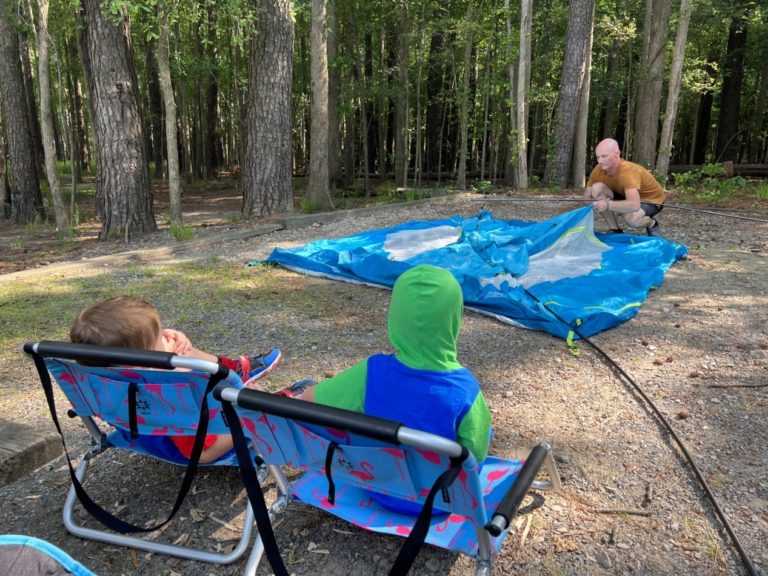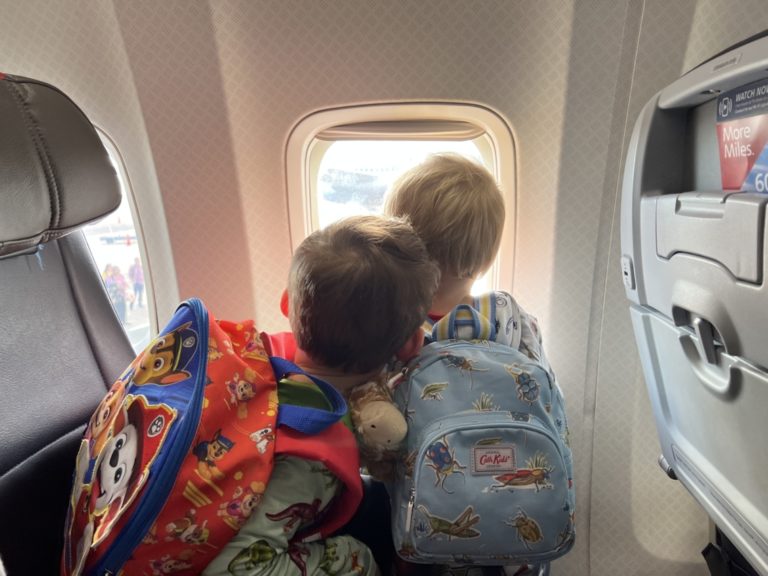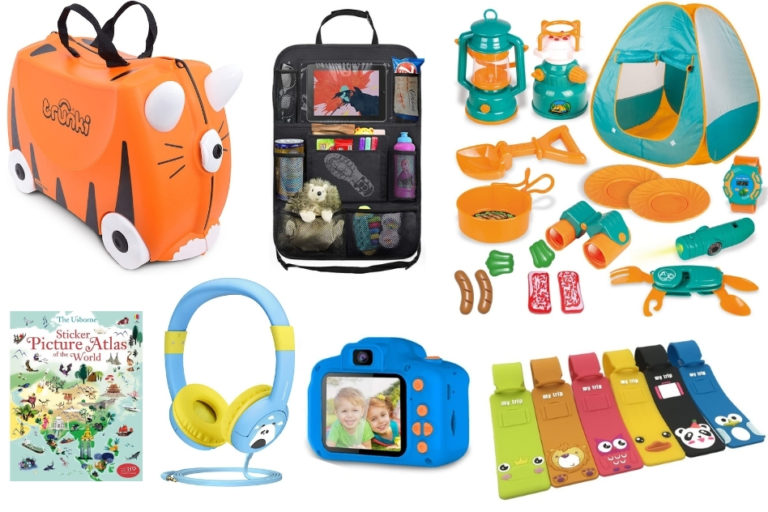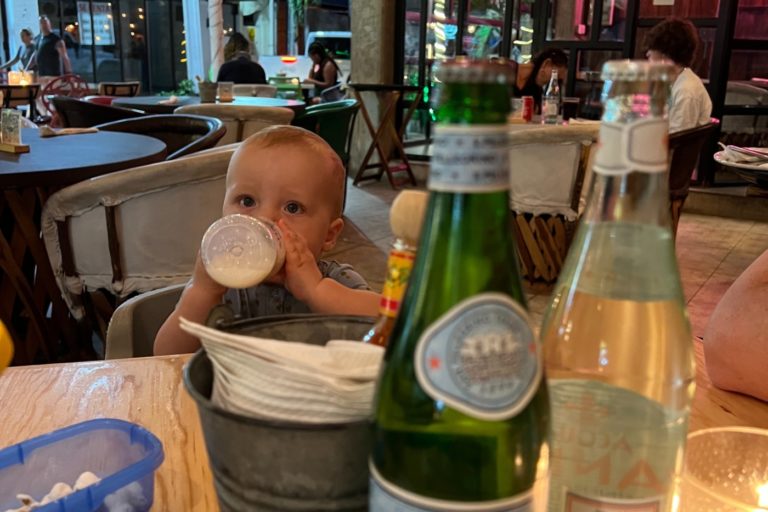Babyproofing Hotel Rooms & Rentals While Traveling: What to Do
I always say that traveling with a baby is much easier than with a toddler, because even though they can cry and require more attention, they don’t move not mobile yet. Once your little one starts crawling and pulling up to standing, followed by walking, traveling changes because you need to think about keeping them safe everywhere.
Childproofing a hotel room can often be easier, because the surface is limited. Baby proofing an Airbnb can be tricky, because quite often furniture and set up can be anything but baby-friendly. We encountered glass table tops, marble floors, heavy doors, or balcony doors opening too easily.
Is Childproofing While Traveling Necessary?
While childproofing a temporary place of stay is not a substitute for adult supervision, it helps reduce the number of accidents that can occur.
While you technically don’t have to babyproof, on a lot of occasions we found ourselves wishing that we did as it would have made our trip less stressful.
We find Airbnbs much more stressful than hotel rooms with toddlers due to the amount of unsecured furniture, items, or decorations. Many think a rental house with separate spaces and a full kitchen would be easier for travel, but it hasn’t worked out that way.
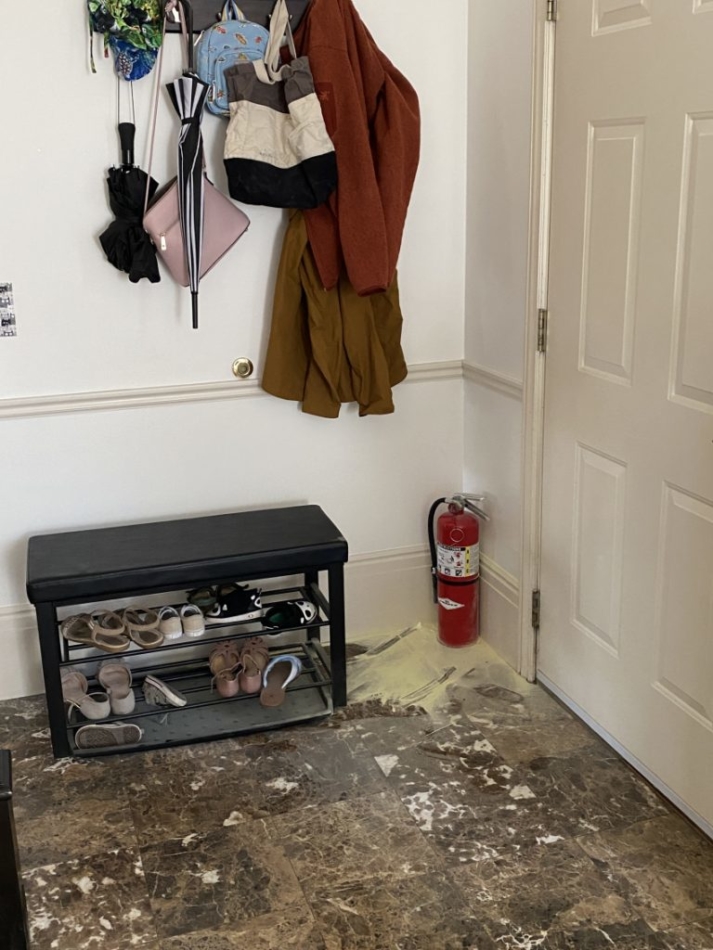
Basics of Childproofing Hotel Rooms and Airbnbs
You can drill in stoppers into some drawers, or install special locks on the doors when you’re at home. When you’re staying at a hotel or Airbnb you naturally can’t do any permanent damage to any items, which makes baby proofing the place harder.
When you see the photos of a place you’re booking, look at the room from the eye level of a toddler to understand what’s in reach and what could be a potential hazard and elements of chaos. For example, your toddler using a hotel phone isn’t dangerous per se, but it’s annoying for everyone.
At what age can you stop babyproofing while traveling?
It’s a tricky question. I remember my friend once told me that some kids can be left alone even before school age and some never – it’s very true. Different kids have different personalities and abilities.
A lot depends on the maturity of the child. Most of the visible gates and locks go away around age two or three.
For example, we stopped with baby gates when my son was a bit over two, but he’s overly mature. With his little brother, we kept most drawer locks until 3.
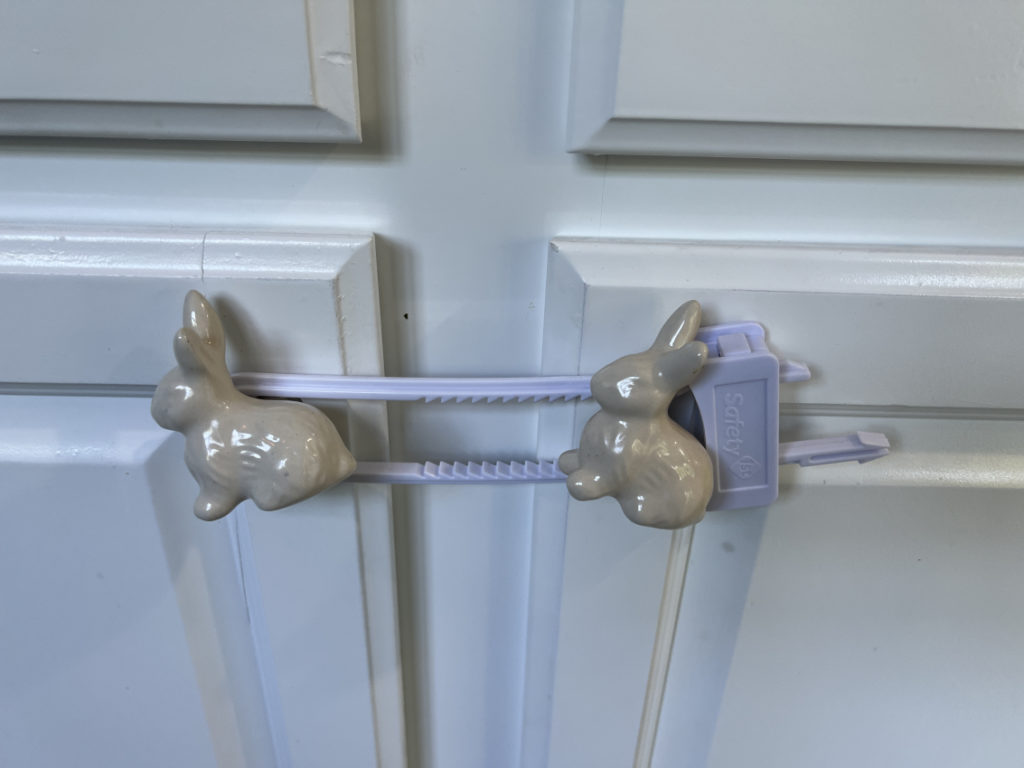
Places that Require Babyproofing While Traveling:
1. Doors
If your child is anything like mine the doors will get opened quickly and I mean quickly… mine knew how to open doors at 8 months and locks and round knobs by 14 months.
You never know what kind of doors your room will have and you want to make sure that in the worst case, you can babyproof it, so your child won’t sneak out attendant onto a balcony or outside.
When you travel you can’t use the standard this for the outdoor door handle, but if you happen to have round door knobs those can come in handy as they’re fully removable.
Also, you need to prevent your child from potentially locking heavy doors on their fingers. My toddler lost a nail on a set of doors and I was sitting just 3 feet away from him. We used this to prevent squished fingers, but there’s also door monkey now that works better.
There’s a trick to babyproofing balcony or terrace doors that slide. Use two removable suction hangers like these, one of each sliding part. Then connect them with a cabinet lock like this or that.
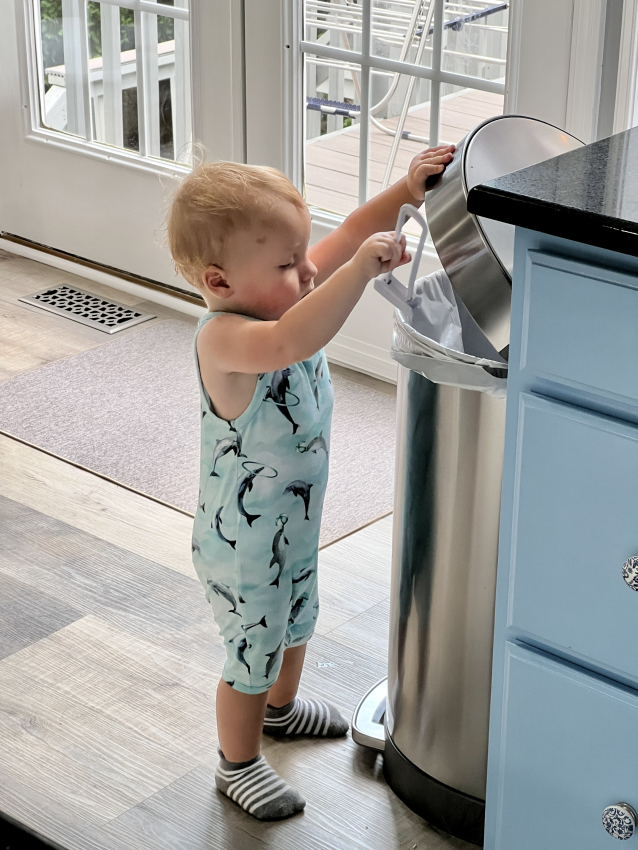
2. Stairs
Stairs are scary and babyproofing the top of the stairs is a must with small children. This is why baby gates are lifesavers. They allow you to isolate an area that you don’t want the child to enter or a place you want to provide the child with limited access.
Most baby gates are easy to install, and relatively cheap work for kids who hate being in the playpen (like my oldest one). There are different kinds of baby gates in the market.
For traveling I recommend this retractable and foldable option, because it doesn’t do any damage, and can fit in a suitcase.
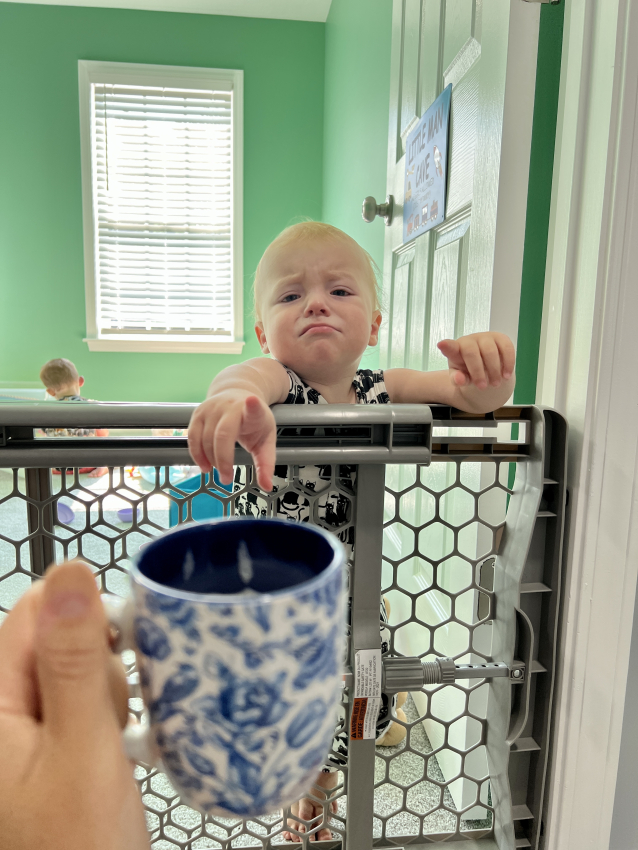
3. Toilets & Trash Cans
Little did I know that children are like little raccoons who like to pull trash and splash in a toilet. We found out about it the hard way when we were about to leave for the beach and couldn’t find a second toddler sandal… until my toddler admitted that he threw the other one in the trash the previous day. Keep your trash protected.
The best lock for the trash is Safety 1st Universal strap and it’s removable. If your baby figures stuff out quickly like mine did this one with a fake button. This can also work for drawers, storage doors, or a toilet.
For the toilet specifically, we used this Mommy’s Helper version at some point.
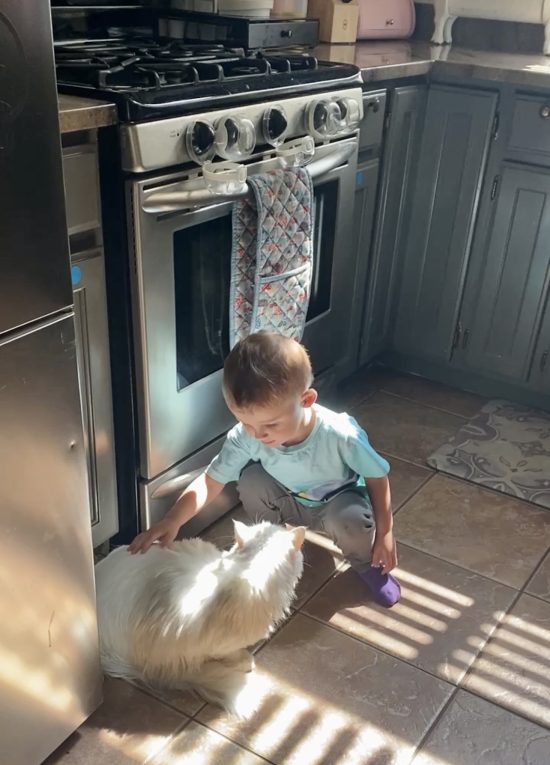
4. Drawers & Cabinets
If your child is anything like my children, you will find them emptying everything for any accessible site and while pulling all the spatulas isn’t dangerous for a child per se, it creates a mess that you can easily avoid. This means repeated work. There are a couple of brilliant items that help when it comes to childproofing your drawers.
My personal preference is the strap locks for cabinets. It’s easy to secure and can be used for multiple purposes including for toilets, dishwashers, drawers, and even storage boxes. A bonus point is that it requires no drilling and can be easily removed once you do not require it anymore.
And since we’re talking about babyproofing the kitchen my husband started bringing these the oven and gas stove protectors, so the child couldn’t burn down the house.
5. Outlets
I kept reading about people recommending bringing painter’s tape to cover the outlets at hotels, but I found this idea to be absolutely ridiculous. As we moved with little kids painter’s tape was frequently on our walls and any toddler would just remove it within seconds.
Get yourself some outlet covers that covers the socket instead. You can bring them to your next hotel or apartment rental.
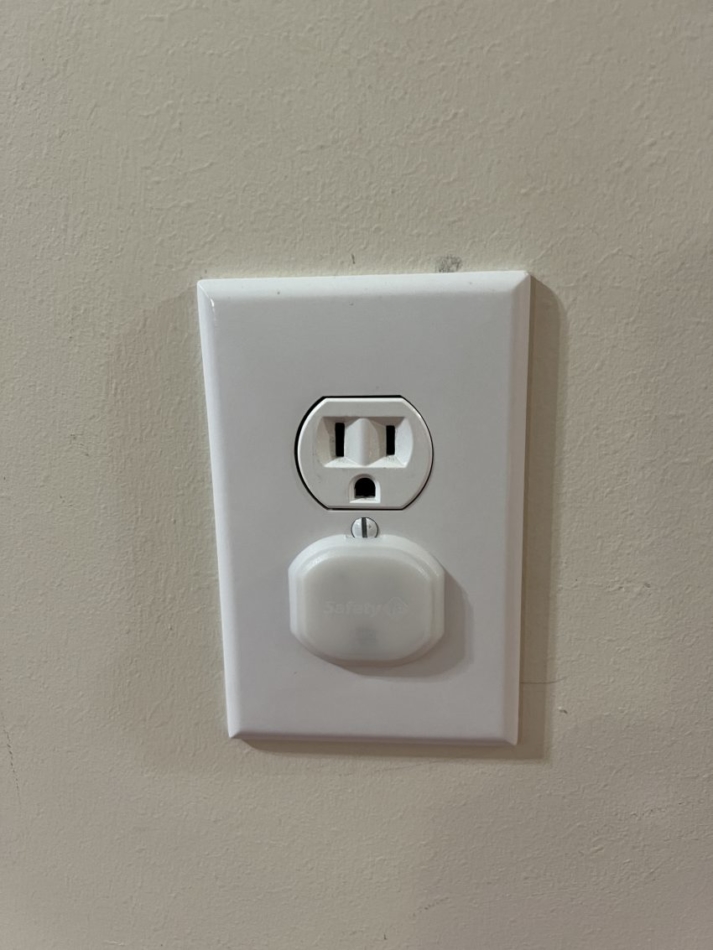
6. Sharp Edges
While there are numerous different kinds of corner protectors that are available online, I’m yet to find one that actually works. My toddler was removing everything in about 5 seconds, so sadly I’m unable to help you in that department.

